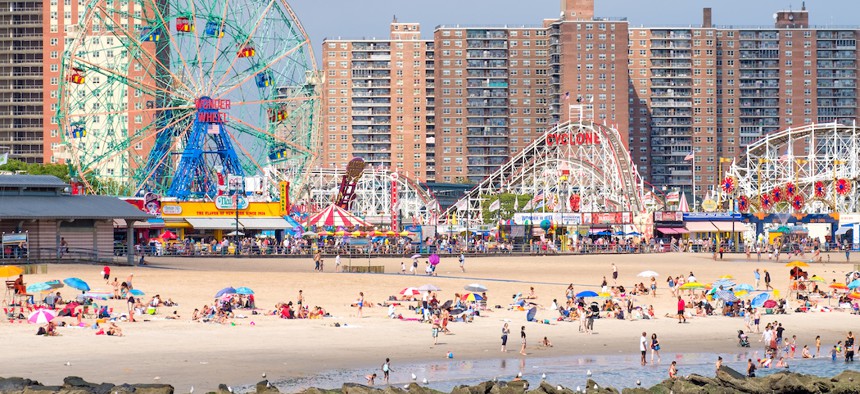New York City
Scott Stringer wants to save NYC’s summer
The New York City comptroller offers ideas for how to safely open city beaches.

New York City Mayor Bill de Blasio won’t open city beaches in time to celebrate Memorial Day Weekend, though some city beaches could reopen in June. Kamira/Shutterstock
As the weather continues to warm and we inch closer to summer, it’s becoming clearer that New York City residents are hoping to find solace outside as “quarantine fatigue” begins to wear on them.
However, New York City Mayor Bill de Blasio won’t open city beaches in time to celebrate Memorial Day Weekend, though some city beaches could reopen in June, The New York Times reports. During a Friday press conference, however, de Blasio urged city residents to “stay local in their neighborhood” this weekend. This statement struck some as hypocritical, since during the pandemic the mayor has frequently driven 12 miles to Brooklyn’s Prospect Park to walk – despite Gracie Mansion being located in a park.
The mayor’s decision to close the city’s beaches has been met with furor. Members of the City Council and state lawmakers have argued that shutting down the city’s beaches will not deter individuals from heading to them and will only create more problems. “I'm not ready to give up on NYC beaches this summer,” City Council Speaker Corey Johnson tweeted on May 15. “NYers will flock to them no matter what and would end up overcrowding other NY, NJ, and CT beaches if we try to keep them closed.”
State Sen. Todd Kaminsky tweeted on May 15: “Really glad beaches can be open next weekend BUT if NYC beaches are closed, it will create a chaotic and untenable situation on Long Island…. For the good and health of all New Yorkers, the City MUST open their beaches for Memorial Day weekend.” Long Island counties have attempted to solve that problem by limiting access to their beaches to county residents, drawing their county executives into a war of wordswith de Blasio and increasing pressure on the mayor to open city beaches.
City Comptroller Scott Stringer argues in a self-published op-ed on Medium that while staying at home is of course the safest way to avoid contracting COVID-19, it’s up to lawmakers to give guidance on which activities are high and low-risk. “Of course, staying home will always be the safest option – but for those who do choose to venture out, we should be giving them honest, evidence-based information to help them make the safest possible choices,” Stringer writes. “If we don’t give people low-risk options, they will choose high-risk ones: swimming in too-swift rivers and waterways, opening the neighborhood fire hydrant, attending large gatherings, and mingling in bars and restaurants.”
Stringer proposes that the city open up its pools, which when properly monitored should be able to kill the coronavirus, and its beaches. States, including New York, are already doing. Plus, city lifeguards are currently undergoing their annual training in anticipation of a June opening, the de Blasio administration confirmed. The comptroller also recommended that the city set a limit for the number of individuals allowed in parks, beaches and pools, and create a reservation lottery system so that all community residents can gain access to them equally.
Like the comptroller, many public health experts have been suggesting that local lawmakers and politicians begin to recognize that the coronavirus crisis isn’t going anywhere, so health policies should be updated to show individuals how they can continue living their lives. “Trying to shame people into 100 percent risk reduction will be counterproductive,” Julia Marcus, an epidemiologist and assistant professor at Harvard Medical School, writes for The Atlantic. “What Americans need now is a manual on how to have a life in a pandemic. If no one else provides the guidance that the CDC won’t, each of us will need to figure out our own.”
Correction: An earlier version of this story incorrectly implied COVID-19 is caused by bacteria; it is caused by a virus.

